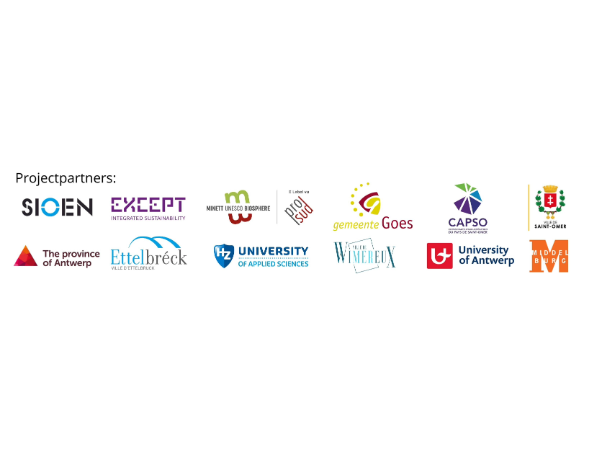
Sioen is a proud partner of the Cool Neighbourhoods project which aims to address pressing heat risks and make at-risk neighbourhoods more liveable. This project is supported by the European Interreg North West Europe programme. Due to global warming, the ever-increasing temperatures are negatively affecting public health, productivity, well-being, air and water quality and other urban systems. These impacts are called ‘Heat Stress’. The Cool Neighbourhoods project wants to tackle these heat risks at a very local level by closely collaborating with communities in 9 pilot areas in the Netherlands, Belgium, France, and Luxembourg. This project is a co-creation process also involving policymakers, specialized designers, and a range of experts from 12 European partners. Through its Greentexx brand, which makes green walls and vertical gardens for various applications, Sioen will contribute to this ambitious project.
Greentexx facilitates the installation of indoor and outdoor vertical gardens by offering both the technical textile on rolls with pre-made pockets and sleeves as well as the entire solution from A to Z. This way, different target audiences can be catered to: architects, installers or building owners. Greentexx’ solution is a strong and durable textile composite with certified fire resistance. It’s lightweight, easily cut to size and quick to install making the realisation of a vertical garden accessible to all.

Despite the similar challenges faced by the 9 pilot areas with the project scope, each one has its own unique circumstances. Different targeted approaches are part of this project so each specific groups within each community can be helped: vulnerable populations, the elderly, youth, SMEs, property owners, and visitors. By integrating these efforts, the project aims to maximize its impact on reducing heat stress and enhancing overall well-being, biodiversity, and environmental quality throughout Interreg North West Europe.
The level of heat stress differ between neighbourhoods. In order to tackle this issue and improve quality of life, all project partners work together to co-create, and implement training programs and neighbourhood plans. These plans are customised for each location based on detailed cost-benefit analysis and data collected through citizen science and community involvement. By making this a collaborative effort, stakeholder support and adoption are maximised – ensuring the project is future-proof and leaves a lasting legacy for future generations. A liveability index will be created to assess impact and allow comparison of neighbourhoods. The knowledge and tools from other European projects such as the former Cool Towns project and Nature Smart Cities project for mitigating heat stress will also be built upon.
In the densely populated regions of North-West Europe, there’s a growing demand for ways to cool neighbourhoods so the risks of heat stress can be mitigated and the quality of life can be maintained. The project identified three types of neighbourhoods:

Planting trees, installing sun-shading and adding water features are some possible strategies for combating heat stress. As a bonus, these actions also make your area more attractive to live and more biodiverse.
For more information about Cool Neighbourhoods and its transformative impact, visit www.coolneighbourhoods.nweurope.eu
